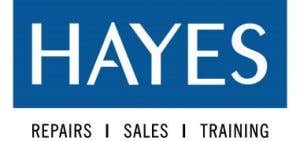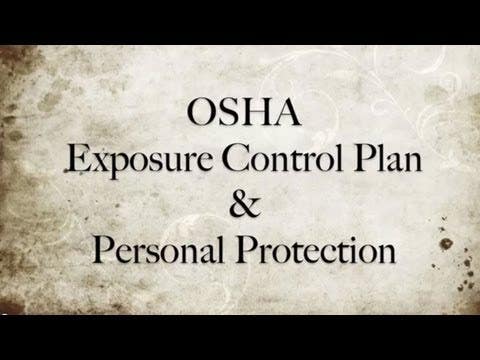Protecting Your Dental Practice from Potential OSHA Violations
Dental offices have a duty to protect their staff from occupational hazards. The Occupational Safety and Health Administration (OSHA) is the U.S government agency responsible for ensuring that America’s workers are safe in the workplace. OSHA sets standards addressing potential health hazards in dental offices such as infectious disease or hazardous chemicals; provides dental OSHA training on these topics; establishes partnerships with dentists nationwide who want to be proactive about safety before an accident happens, and encourages the continual improvement of worker safety by providing free tools like posters highlighting dental best practices on common tasks so they can always get better at what they do every day.
OSHA violations have been on the rise, as state governments look for ways to make up funds in tight budgets. Unfortunately it only takes one phone call from an unhappy employee or patient – which is a very real possibility given that dental office inspections are not always frequent enough – and you could be at risk of losing your business. Make sure OSHA doesn’t come knocking by making sure you’re following all safety standards outlined within their inspection guidelines: this will ensure financial security so that neither patients nor employees can put your practice at risk.
The Occupational Safety and Health Administration (OSHA) can conduct workplace inspections at any given time for a number of different reasons, such as serious injuries or fatalities. In many cases, OSHA conducts these inspections in response to employee complaints; however even lower-risk environments like dental offices are not exempt from inspection by the agency.
The best way to avoid inspections and potential fines is by establishing, promoting, and enforcing a culture of safety in the dental workplace. Even the meticulous dental offices are not spared from these inspections.
Dental professionals should be especially aware of the Bloodborne Pathogen Standard and Hazard Communication Standards, which protect employees who are at risk to exposure with blood or bodily fluids. These standards also require written safety plans including an Exposure Control Plan and Training for Employees.
The workplace is a changing environment, and the slightest misstep can lead to disaster. The media attention on high-profile infection control violations has led to an increased awareness of both your patients and your staff, who are now more vocal about their concerns for safety in healthcare facilities. A good way that you can start your practice towards OSHA compliance starts with these simple steps:
Conduct your own OSHA self-audit
Use a checklist to uncover potential violations that may require attention and correction
A good example is by ensuring all employees wear protective gear such as gloves and masks when needed and have handwashing stations where there is hands contact with contaminated objects.
Schedule regular dental OSHA requirements training for team members
Make sure all employees have been trained in how they should handle and dispose of hazardous and infectious materials.
New employees should complete the course immediately upon hiring and after one year, the entire team should do so together if it has been more than a year since their last training session. Record who completed how many hours of refresher education by writing down dates, topics covered in each hour (e.g., “hand washing”), names or job titles of employee attending, as well as any questions asked during class.
Focus on Bloodborne Pathogens and the Hazard Communication Standards
Of the 274 citations issued to dental offices in 2013, 229 were due to employees not following Bloodborne Pathogen Exposure Control Plan or Hazard Communication Program. One of your most important duties as a dentist is staying up-to-date on these regulations if you want to avoid costly fines and keep yourself safe from harm.
Make certain that each employee knows what signs or symptoms may be indicative of exposure so he/she will know if it’s necessary to go directly into quarantine mode (or not).
The risk of bloodborne pathogens and infection control procedures should be the forefront for your dental office. You and your employees may know about HIV or hepatitis scares caused by various breaches in infection, which is why you’ll want to explain how the sterilization process works. Various state dental boards are also taking a closer look at compliance with the CDC Guidelines for ensuring safety when performing dentistry services.
Protect your employees, patients, and practice with OSHA training and compliance. For more help, contact Hayes or book an online or in-house Dental OSHA Requirements and Training for your team.
You may also visit the links below to learn more about other training sessions we offer.
Hayes Handpiece also provides in-house and online staff training on handpiece practical care and federal regulatory compliance. To learn more about our training topics, you may visit the links below:
A-dec | Beyes | Bien Air | Denticator | Hall | Henry Schein | Impact Air | Kavo | Lares | Midwest | Morita | Nobel Biocare | Nouvag | NSK | Patterson | Schein Master | Shamrock | Star | Strauman | Stryker | W&H | Young | American Eagle | HU Friedy | Nordent | PDT
Are you looking for help with your dental office staff?
Hayes Handpiece provides dental office staff training and development. We offer a variety of options to fit the needs of any size practice. Our goal is to help you create a positive culture, reduce turnover and increase production by helping your team be more effective in their roles.
If this sounds like something that could benefit you, then we would love to talk about how we can help!
Are you in the dental field and looking for a way to meet OSHA requirements?
Hayes Handpiece is here to provide you with all of the dental osha requirements you need in order to stay compliant. We have a wide range of products and services to choose from, so you can find exactly what you’re looking for.




